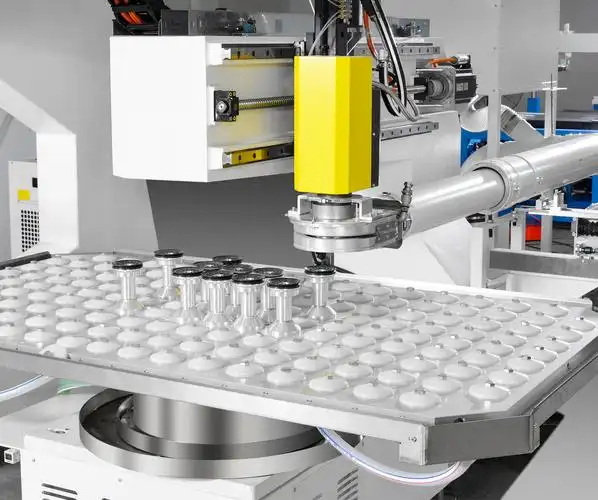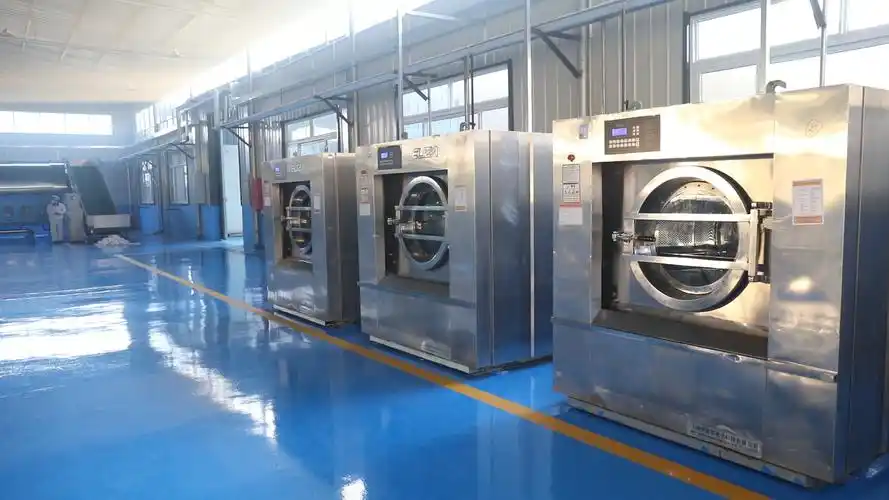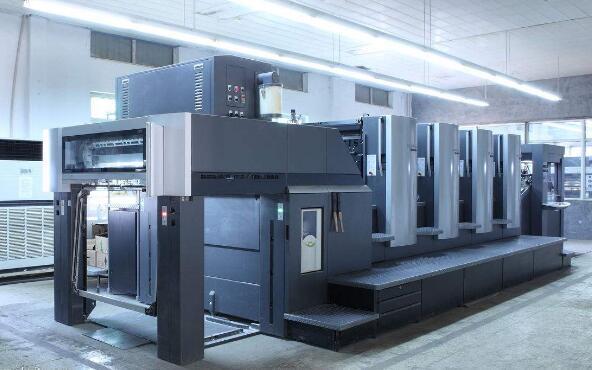
Wind turbine and pump industry
Providing solutions for industrial equipment power
Wind turbine and pump industry
Summary
In the wind turbine and water pump industry, dedicated motors serve as core power components, and their performance directly impacts the equipment's energy efficiency, reliability, and operating costs. These motors must meet the demands of high loads, long-term continuous operation, and resistance to environmental interference. They are widely used in industrial ventilation, building water supply and drainage, wastewater treatment, mine drainage, and power industry cooling, among other applications. The following analysis will cover application scenarios, motor types, technical characteristics, and development trends.
I. Application Scenarios and Core Requirements
1. Main Application Scenarios
- Industrial Fans :
- Ventilation and air exchange in metallurgical, chemical, and power industries (e.g., blast furnaces, kiln induced draft fans), requiring the conveyance of high-temperature, dusty, or corrosive gases.
- Centrifugal and axial flow fans in air conditioning and refrigeration systems, used for air circulation and heat exchange.
- Industrial Water Pumps :
- Water supply and drainage systems: building water supply, fire pumps, industrial cooling water circulation pumps.
- Wastewater treatment: sludge pumps, sewage lift pumps, requiring resistance to media corrosion and impurity abrasion.
- Mining and Petroleum: mine drainage pumps, petrochemical process pumps, requiring high reliability and explosion-proof performance.
- Residential and Municipal :
- High-rise building booster pumps, urban wastewater treatment plant pump units, subway ventilation fans, etc.
2. Core Requirements
- High Reliability Wind turbines and water pumps are mostly continuously operating equipment (annual operating time ≥ 8000 hours), requiring low motor failure rates and long maintenance cycles.
- High Efficiency and Energy Saving Industry energy consumption accounts for more than 30% of total industrial energy consumption, requiring motor efficiency to meet IE3 and above energy efficiency standards.
- Environmental Resistance Adaptability to high temperatures, humidity, dust, corrosive gases, and other complex working conditions (e.g., protection level IP55/IP65).
- Adjustable Speed Variable frequency speed regulation to meet the dynamic adjustment needs of flow and pressure (e.g., "variable load operation" of fans).
II. Commonly Used Motor Types and Characteristics
1. Three-Phase Asynchronous Motors
- Most Widely Used :
- Squirrel-cage asynchronous motor :
- Simple structure, low cost, easy maintenance, suitable for ordinary wind turbines and water pumps (e.g., residential water supply pumps, air conditioning fans).
- Efficiency levels: IE2 (basically eliminated), IE3 (mainstream), IE4 (ultra-high efficiency, permanent magnet synchronous type).
- Wound rotor asynchronous motor :
- Speed regulation is achieved through an external resistor, suitable for scenarios with high starting torque requirements (e.g., large mine drainage pumps), but with lower efficiency.
- Squirrel-cage asynchronous motor :
- Typical Parameters Power range 0.75-5000kW, speed 1450/2900rpm (two-pole/four-pole motor).
2. Permanent Magnet Synchronous Motor
- High-efficiency and energy-saving type :
- Using rare earth permanent magnets, the power factor is close to 1, and the efficiency is 5%-10% higher than that of asynchronous motors with the same power, especially suitable for long-term full-load operation of wind turbines and water pumps (e.g., industrial circulating water pumps).
- Good speed regulation performance, combined with a frequency converter, can achieve wide-range high-efficiency operation (e.g., aeration fans in wastewater treatment plants).
- Characteristics High initial cost, but significant long-term energy-saving benefits, suitable for high-power scenarios (≥100kW).
3. Explosion-proof Motor
- For Hazardous Environments :
- Meets explosion-proof standards such as Ex d and Ex e, used for fans that transport flammable and explosive gases (e.g., combustible gas fans in the petrochemical industry) or pumps that contact explosive liquids (e.g., submersible pumps on oil platforms).
- Reinforced structure: explosion-proof casing, sealed bearings, anti-static coating, etc., protection level ≥IP56.
4. Variable Frequency Motor
- For Speed Regulation :
- Optimized electromagnetic design, adaptable to non-sinusoidal wave power supplies output by frequency converters, reducing harmonic losses and heat generation.
- Wide speed regulation range (e.g., 10-100% rated speed), supporting constant torque (low speed) and constant power (high speed) operating modes, matching the "square torque characteristic" of wind turbines and water pumps (power ∝ speed³).
5. Submersible Motor
- For Underwater Equipment :
- Fully sealed structure, using waterproof cables and corrosion-resistant materials (e.g., stainless steel shaft, epoxy resin coating), used for submersible pumps, deep-well pumps, etc.
- Typical parameters: protection level IP68, can be submerged underwater for 50-100 meters for extended periods, power range 1.5-300kW.
III. Key Technical Requirements
1. Energy Efficiency and Energy-Saving Design
- IE3/IE4 Energy Efficiency Standards Motor efficiency must be higher than the energy efficiency limit values of national standard GB 18613, for example:
- IE3 level 2-pole motor (11kW) efficiency ≥92.5%, IE4 level ≥94%.
- Variable Frequency Energy Saving Principle Reducing shaft power by reducing speed, for example: when the fan speed is reduced to 80%, the power is reduced to 51.2% of the rated value, resulting in significant energy savings.
2. Reliability and Durability
- Bearings and Lubrication Using SKF/FAG brand bearings, lifespan ≥50,000 hours; grease lubrication cycle ≥8000 hours (ordinary motor) or equipped with an automatic oil injection system (large motor).
- Insulation System F-class insulation (temperature resistance 155℃), H-class insulation (180℃, for high-temperature fans), resistant to voltage surges and humid environments.
3. Speed Regulation and Control
- Variable Frequency Drive (VFD) Mainstream solution, energy saving rate 20%-50%, needs to be equipped with a harmonic suppression device (such as a reactor) to reduce interference to the power grid.
- Permanent Magnet Synchronous Motor + Direct Drive Technology Eliminates the need for a gearbox, reduces transmission losses, suitable for high-speed fans (such as single-stage centrifugal fans, speed ≥10,000 rpm).
4. Environmental Adaptability
- Protection Level IP54/IP55 for dusty environments, IP56 for humid environments, IP68 for underwater use.
- Corrosion Resistance Stainless steel shell, anti-salt spray coating is used in coastal or chemical plant scenarios; epoxy resin or zinc-nickel alloy is sprayed on the motor surface.
IV. Technological Development Trends
1. High Efficiency and Energy Saving
- Popularization of Permanent Magnet Motors Driven by policies (such as China's "14th Five-Year Plan" energy saving plan), IE4 permanent magnet synchronous motors will gradually replace traditional asynchronous motors. The market penetration rate is expected to exceed 30% by 2025.
- Ultra-High Efficiency Level IE5 motors (efficiency ≥96%) are in the research and development stage, using reluctance-permanent magnet hybrid rotor technology, suitable for high-power water pumps.
2. Intelligence and Digitalization
- Motor Internet of Things (MOT) Integrates temperature, vibration, and current sensors, monitors motor status in real-time through the IoT platform, and performs predictive maintenance (such as early warning of bearing wear).
- Adaptive Control Combined with AI algorithms, it automatically adjusts motor parameters (such as inverter PID parameters) according to load changes to optimize energy efficiency.
3. Integration and Lightweight
- Integrated Motor-Pump/Fan Design Direct drive structure reduces mechanical losses, such as magnetic levitation fans (motor and impeller are directly connected, speed above 100,000 rpm).
- Material Innovation Using ultra-thin silicon steel sheets (below 0.23mm) and carbon fiber rotors to reduce motor weight and inertia.
4. Low-Carbon and New Energy Adaptability
- Renewable Energy Drive When fan and water pump motors are connected to unstable power sources such as photovoltaic and wind power, they need to have a wide voltage adaptability (such as AC 380V±20%) and the ability to cooperate with energy storage systems.
- Rare-Earth-Free Permanent Magnet Technology Develop ferrite permanent magnet motors or reluctance motors to reduce reliance on rare earth resources.
V. Typical Application Cases
1. Industrial circulating water pump (permanent magnet synchronous motor)
- Scenario Cooling water pump of a certain steel plant, power 200kW, annual operation 8760 hours.
- Solution Originally used IE3 asynchronous motor (efficiency 93%), replaced with IE4 permanent magnet synchronous motor (efficiency 96.5%).
- Effect Annual electricity saving ≈200×(0.965-0.93)/0.93×8760≈60,000 kWh, saving electricity costs of about 30,000 yuan (calculated at 0.5 yuan/kWh), payback period 2.5 years.
2. Wastewater treatment plant aeration fan (variable frequency speed regulation)
- Scenario Roots blower, power 160kW, average load rate of 60% during traditional power frequency operation.
- Transformation Installed a variable frequency drive, the speed was reduced to 70%, and the power was reduced to about 160×(0.7)³≈54.88kW.
- Energy Saving Rate (160×0.6 - 54.88)/ (160×0.6) ≈45%, annual electricity cost savings of about (160×0.6 - 54.88)×8000×0.5≈180,000 yuan.
3. Mine drainage pump (explosion-proof motor)
- Scenario Underground drainage pump in a gas mine, power 500kW, requires explosion-proof certification Ex d IIC T4.
- Configuration Explosion-proof asynchronous motor, protection level IP65, equipped with temperature sensors and vibration monitoring devices to ensure safe operation in flammable and explosive environments.
Summary
The demand for special motors in the fan and water pump industry is centered on "high efficiency, reliability, and energy saving." In the future, with the promotion of carbon neutrality policies and the development of intelligent technologies, permanent magnet synchronous motors, variable frequency speed regulation systems, and intelligent maintenance technologies will become the mainstream direction. Enterprises need to select suitable motor types according to specific working conditions (such as medium characteristics, load types, and environmental conditions), and improve equipment efficiency and reduce the life-cycle cost through energy-saving transformation and digital upgrades.








